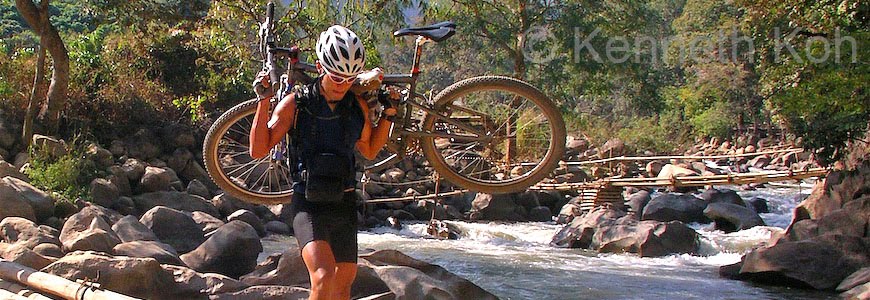I once led a normal life. Some would call it ordinary. For a while, it was what I wanted... and then it wasn't. So I quit my job as an airline pilot, sold the house, sold the sports car, and got out of the ratrace. This was four years ago. My life is full and I haven't looked back.
How can I help make 2012 a year where you can live beyond the ordinary? First of, don't quit your job unless you have a sound financial plan. Here are some ideas I've picked up over the years:
Stretch Yourself
You've got to start somewhere. What are you doing for your next vacation? Maybe it's time to get a little dirty, sweat a little and challenge yourself. Maybe set a goal for yourself. Instead of sitting on a beach in Bali, maybe you can trek in Nepal. Do something different. If you're a runner, maybe buy a mountain bike and learn the skills to ride offroad confidently. Stretch yourself both mentally as well as physically.
| Approaching the Summit of Mt. Chola (6168m) in Sichuan, China. |
Every adventurer starts out with smaller challenges, building experience with small mistakes. Want to climb a big mountain? First learn the skills: rock-climbing, ice-climbing, snow craft, rope work, etc. Then practice the skills by taking small, weekend trips out into the mountains. Accumulate experience: find out what works, what doesn't. Finally, train physically to accomplish your goals.
| Trekking the Annapurna Circuit, Nepal |
Make a Plan, Write it Down
For me, I can only plan it if I can write it down, and clearly see the steps needed to get there. I have a big whiteboard divided into 12 blocks for the coming 12 months. I pen in the goal and then pen in the various things I need to do to get there (buying equipment, training, etc), refining it as I go along. For me, planning for something that's going to take place in, say five years, would not be a plan at all. It would be a dream. I need to write it down which solidifies it, makes it real, as if to say, "this is going to happen!".
| Kayaking the Pahang River from Source to Sea, Malaysia. |
Read everything you can about what you want to do. This is part of preparation. Libraries and the internet are a wealth of information. Sometimes, there's conflicting information. If this is the case, find a guru - someone who's ideas and philosophy resonate with yours, and follow them. Google them and read everything they have written, email them, if necessary, to find out their latest ideas, or to get some tips.
You are not the same person you were yesterday as the person you can be tomorrow.
Have a great 2012!

























